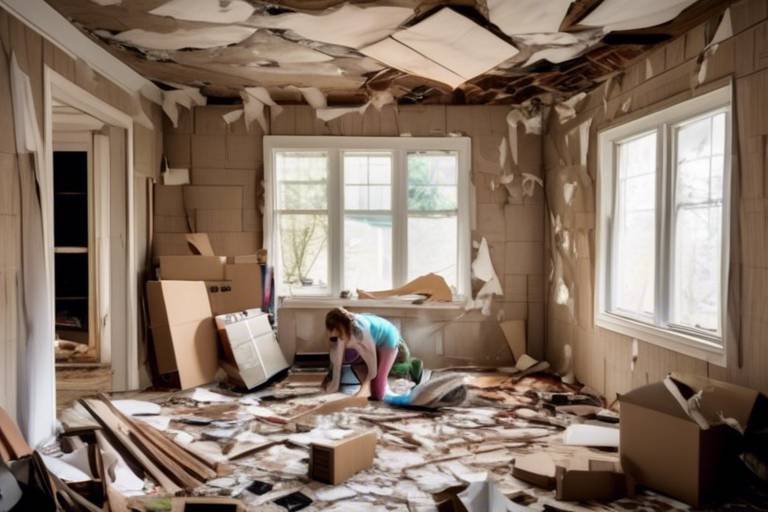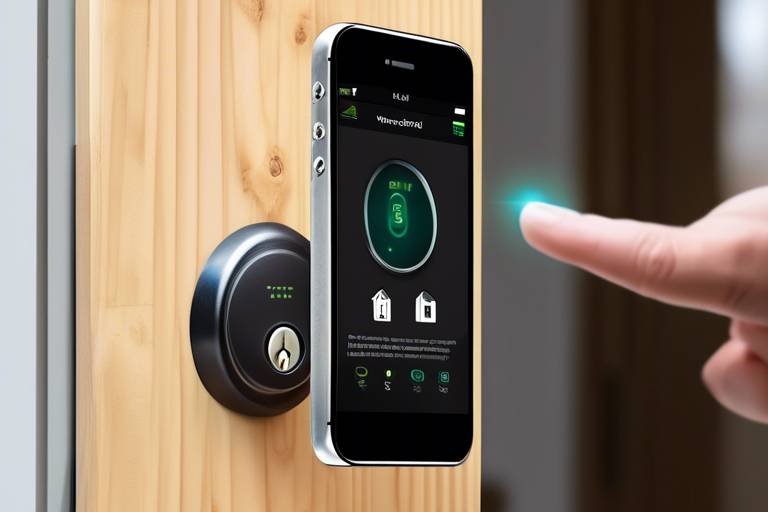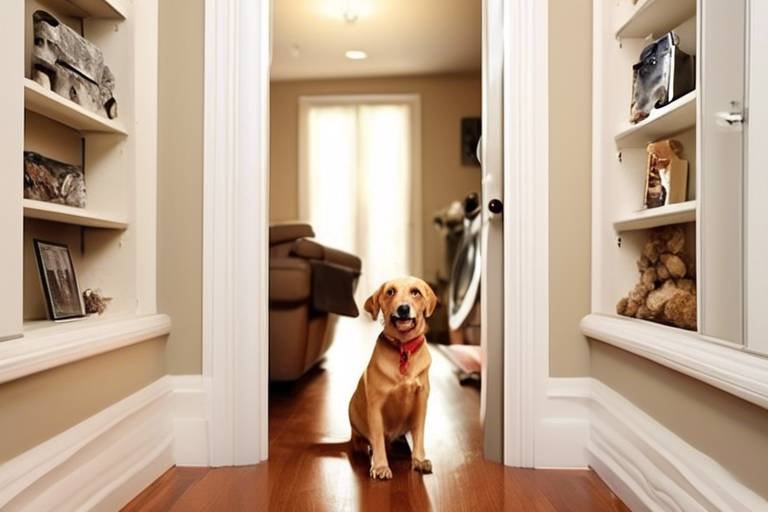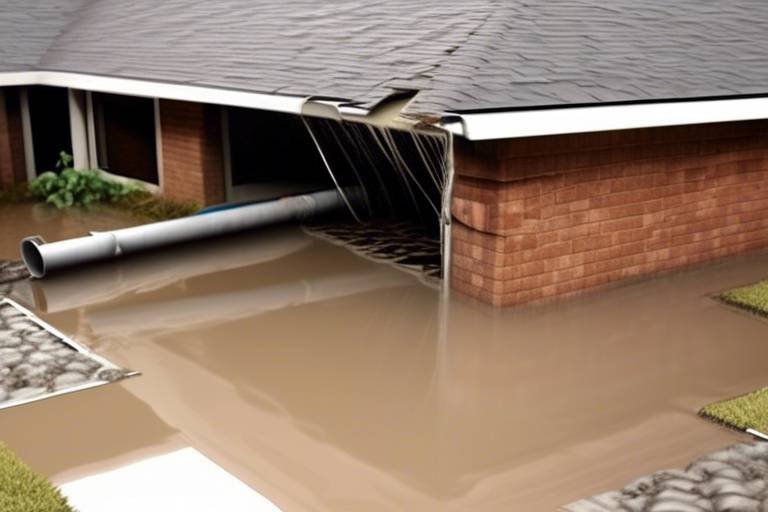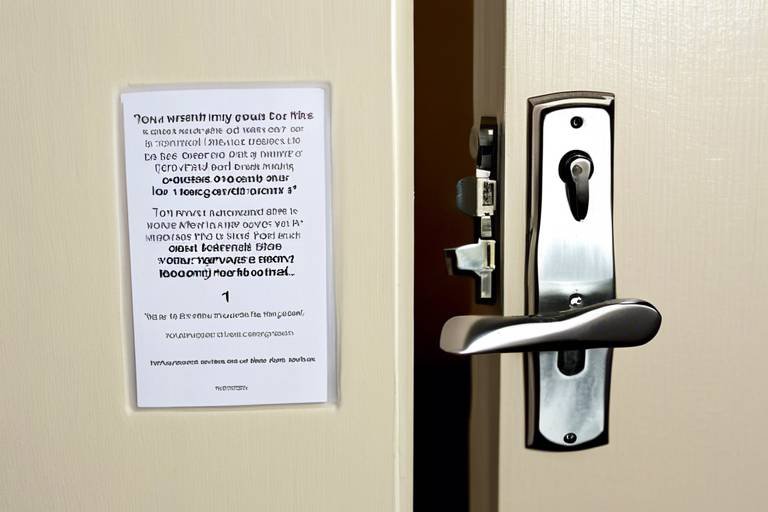Preparing your Home for a Natural Disaster
When it comes to protecting your home and loved ones from the unpredictable forces of nature, preparation is key. Natural disasters can strike without warning, leaving devastation in their wake. Whether it's a hurricane swirling ominously on the horizon, an earthquake shaking the very ground beneath your feet, or a wildfire creeping dangerously close, being prepared can mean the difference between safety and tragedy. This article provides essential tips and strategies to help homeowners safeguard their properties against natural disasters, ensuring safety and preparedness for unexpected events.
Natural disasters vary widely, encompassing a range of events such as hurricanes, earthquakes, floods, and wildfires. Each type of disaster comes with its own unique set of challenges and risks. For instance, hurricanes can cause severe flooding and wind damage, while earthquakes can lead to structural failures without any prior warning. By understanding these types, homeowners can tailor their preparation strategies effectively. For example, if you live in a flood-prone area, investing in sump pumps and flood barriers might be wise. On the other hand, if you reside in a region susceptible to earthquakes, retrofitting your home to withstand seismic activity is crucial. Knowing the specific threats to your area is the first step in crafting a robust disaster preparedness plan.
An effective emergency plan is crucial for family safety during a disaster. It’s not just about having supplies; it’s about knowing what to do when the unexpected happens. This section outlines steps to create a comprehensive plan that includes communication and evacuation procedures. Consider this: in the chaos of a disaster, having a clear plan can provide a sense of control and calm. Start by discussing with your family what to do in various scenarios. Have a family meeting to identify roles and responsibilities, ensuring everyone knows what to do and where to go. This proactive approach can significantly reduce panic and confusion when it matters most.
Clear communication is vital during emergencies. It’s easy to become disconnected when chaos reigns, but establishing reliable communication methods among family members and with emergency services can save lives. Consider setting up a group chat or using emergency apps that allow for quick updates. In addition, have a backup plan for when cell towers are down. A simple yet effective method is designating a central meeting point where everyone can gather if phone lines fail. This way, even if you can’t reach each other via phone, you’ll know where to go.
Selecting trustworthy emergency contacts can streamline communication during a disaster. It’s important to have a list of local and out-of-area contacts who can relay information if you’re unable to reach each other. Make sure everyone in your family knows these contacts and has their numbers saved in their phones. This way, if local lines are jammed, you can still reach someone outside the affected area who can help coordinate your family’s safety.
Identifying safe meeting points ensures family members can reunite after a disaster. Choose accessible and recognizable locations, such as a local park or a neighbor’s house. Make sure everyone in your family knows these spots and practices getting there. It’s like having a secret hideout; you want to make sure everyone knows the way! This simple step can provide comfort and security in a time of crisis.
An emergency kit is essential for survival during disasters. Think of it as your lifeline when the unexpected happens. This section details the necessary items to include in your kit for various disaster scenarios. Generally, your kit should include:
- Water (one gallon per person per day for at least three days)
- Non-perishable food (enough for at least three days)
- Flashlight and extra batteries
- First aid kit
- Whistle (to signal for help)
- Dust mask (to help filter contaminated air)
- Personal sanitation supplies
- Local maps
Don’t forget to personalize your kit based on your family’s specific needs. If you have pets, include food and supplies for them too!
Securing your home can significantly reduce damage during a disaster. Think of your home as your fortress; the stronger it is, the better it can withstand attacks from nature. This section provides practical tips on reinforcing structures and protecting valuables. Start by evaluating your home’s vulnerabilities. Are your windows and doors sturdy? Do you have a secure roof? Simple upgrades like installing storm shutters, reinforcing garage doors, or using hurricane ties can make a world of difference. Additionally, consider creating a safe room in your home where family members can gather during severe weather events. This space should be away from windows and equipped with basic supplies.
Assessing your home's structural integrity is crucial for disaster resilience. Look for signs of wear and tear, such as cracks in the foundation or walls, and address these issues promptly. If you’re unsure where to start, consult with a professional who can provide insights into necessary improvements. Think of your home as a car; regular maintenance can prevent breakdowns when you need it most.
Protective features like storm shutters and reinforced doors can enhance safety. These installations are your home’s armor against the elements. For instance, storm shutters can protect windows from flying debris during a hurricane, while a reinforced door can deter intruders during a crisis. Explore options that suit your home and budget, and consider consulting with a contractor who specializes in disaster-resistant construction.
1. What should be in my emergency kit?
Your emergency kit should include water, non-perishable food, a flashlight, first aid supplies, and personal hygiene items, among other essentials.
2. How can I secure my home against hurricanes?
To secure your home against hurricanes, consider installing storm shutters, securing loose items outdoors, and reinforcing your roof and doors.
3. What is the best way to communicate during a disaster?
Establish a communication plan that includes emergency contacts and a designated meeting point. Use group messaging apps for quick updates.
4. How often should I review my emergency plan?
It’s best to review your emergency plan at least once a year or after any significant changes in your family or home.

Understanding Different Types of Natural Disasters
When it comes to protecting your home, understanding the various types of natural disasters is absolutely essential. Each type of disaster brings its own unique set of challenges and risks, which means that preparation strategies must be tailored accordingly. For instance, a hurricane can unleash devastating winds and flooding, while an earthquake can strike with little to no warning, causing structural damage and chaos in mere seconds. By familiarizing yourself with these different disasters, you can better equip yourself and your family for whatever nature throws your way.
Let’s dive deeper into some of the most common types of natural disasters:
- Hurricanes: These powerful storms form over warm ocean waters and can lead to severe flooding, high winds, and storm surges. It’s crucial to have a plan in place well before hurricane season hits.
- Earthquakes: Often unpredictable, earthquakes can cause buildings to collapse and create landslides. Knowing how to “drop, cover, and hold on” can save lives during a quake.
- Floods: Whether caused by heavy rainfall, storm surges, or rapid snowmelt, floods can inundate homes and create hazardous conditions. Understanding your local flood zone can help you mitigate risks.
- Wildfires: Particularly common in dry areas, wildfires can spread quickly, threatening homes and lives. Creating defensible space around your property is key to protecting it from flames.
Each of these disasters has its own warning signs and preparation techniques. For example, hurricanes often come with forecasts and evacuation orders, while earthquakes may strike without any warning at all. Therefore, it’s important to stay informed about your local risks and to have a plan that addresses each potential disaster. This could involve everything from securing heavy furniture to having a stockpile of emergency supplies ready to go.
Moreover, understanding the geography of your area can also play a significant role in disaster preparedness. Are you in a flood zone? Near a fault line? Or perhaps in a region prone to wildfires? Your home’s location can dictate not just how you prepare, but also how you respond when disaster strikes. Knowledge is power, and the more you know about the threats you face, the better equipped you will be to protect your loved ones and your home.
In conclusion, taking the time to understand the different types of natural disasters is not just an academic exercise; it’s a vital step in creating a comprehensive emergency plan. By recognizing the unique challenges posed by each disaster and preparing accordingly, you can significantly enhance your family's safety and resilience. Remember, when it comes to natural disasters, being proactive is far better than being reactive.

Creating an Emergency Plan
When it comes to preparing for natural disasters, having an effective emergency plan is not just a good idea—it's essential. Imagine the chaos that can ensue when a disaster strikes: the power goes out, communication lines are down, and panic sets in. By creating a well-thought-out emergency plan, you can significantly reduce the stress and confusion that often accompanies these unexpected events. So, how do you go about crafting a plan that will keep you and your loved ones safe?
First and foremost, you need to identify the potential risks in your area. Are you in a hurricane zone, or is your home more prone to earthquakes? Understanding the specific natural disasters that could affect you will help tailor your plan to address those threats effectively. For instance, if you live in a flood-prone area, your plan should include evacuation routes and safe locations that are elevated and away from rising waters.
Next, communication is key. In the event of a disaster, you need to ensure that everyone in your household knows how to reach each other. This is where establishing communication protocols comes into play. Make sure to discuss how you will communicate if cell phone networks fail. Consider using walkie-talkies or setting up a group chat on a messaging app that works offline. It’s also wise to designate a family emergency contact who lives outside your immediate area. This person can help relay information if local communication fails.
Another critical component of your emergency plan is to designate meeting points. Should disaster strike and you become separated from your family, having a predetermined location to regroup can be a lifesaver. Choose locations that are easily accessible and familiar to everyone, such as a nearby park or a community center. This way, if you can't return home, you know exactly where to go to find each other. Make sure to practice this meeting plan with your family so that everyone is aware of where to go and what to do.
Furthermore, it’s essential to keep your emergency plan updated. Life changes—people move, new family members join, and circumstances shift. Schedule regular reviews of your plan, perhaps every six months or after a significant life event, to ensure that it remains relevant and effective. You might even consider conducting practice drills for different scenarios, which can help everyone feel more prepared when the real thing happens.
Finally, document your emergency plan and keep copies in accessible locations. You might want to have a printed version in your emergency kit, as well as digital copies stored on your devices. This way, if you need to grab your plan quickly, you won’t waste precious time searching for it. Remember, the goal of an emergency plan is not just to have one; it’s to ensure that everyone knows what to do when the unexpected occurs.
- What should I include in my emergency plan? Your emergency plan should include evacuation routes, communication protocols, designated meeting points, and emergency contacts.
- How often should I update my emergency plan? It's recommended to review and update your emergency plan at least every six months or after significant life changes.
- What items should be in my emergency kit? Your emergency kit should contain water, non-perishable food, a first-aid kit, flashlights, batteries, and any necessary medications.
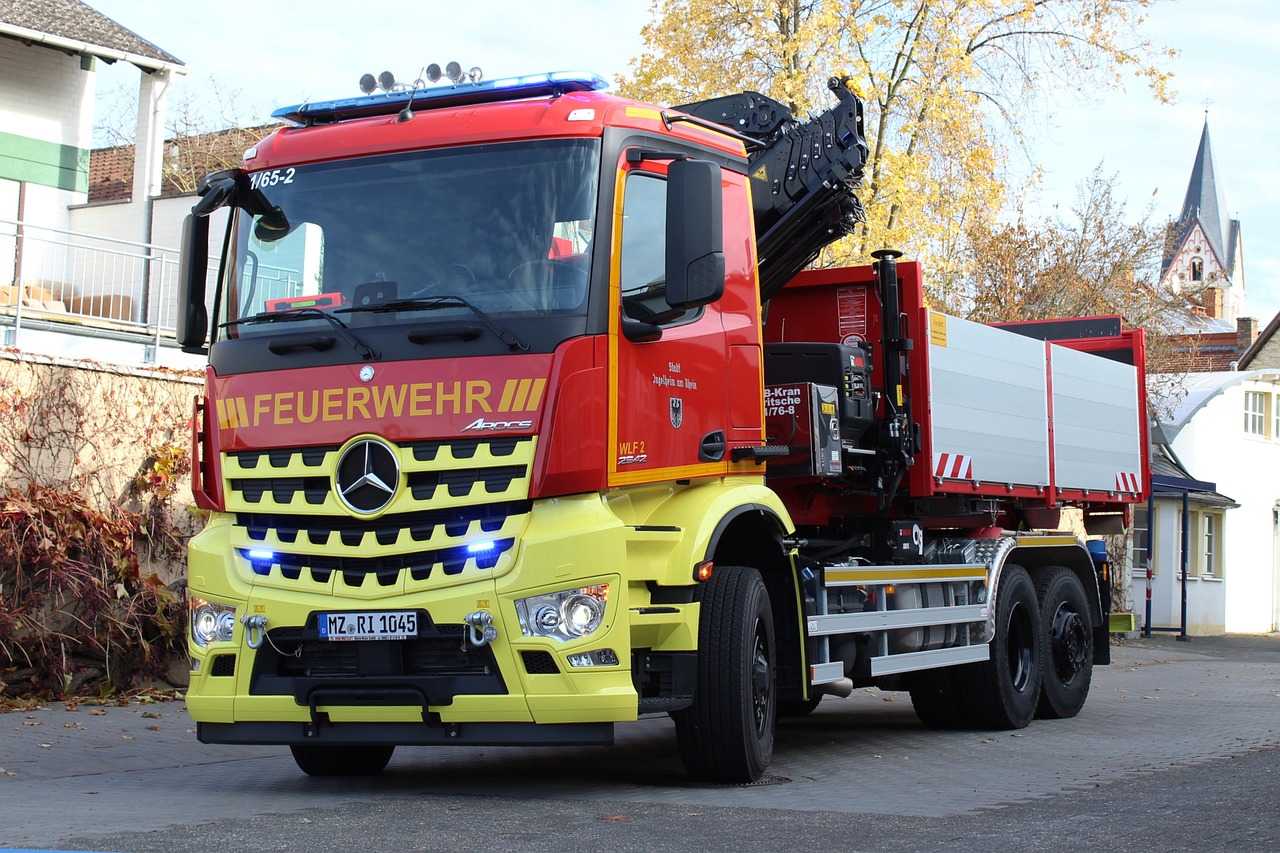
Establishing Communication Protocols
When disaster strikes, the last thing you want is to be left in the dark, wondering where your family members are or how to contact emergency services. Establishing clear communication protocols is not just a good idea; it’s a vital lifeline that can make all the difference during a crisis. Think of it as your family’s roadmap through the chaos of a natural disaster.
First and foremost, it's essential to identify how your family will communicate when traditional methods fail. In the digital age, we often rely on our smartphones, but during a disaster, cell towers can be overwhelmed or damaged. Therefore, consider having a backup plan in place. This could include using text messages or social media platforms, which can sometimes work when voice calls cannot. Additionally, establish a family group chat where everyone can quickly send updates on their status and location.
Another critical aspect of your communication plan is to designate a trusted out-of-area contact. This person can serve as a central point of contact for your family. In many cases, it’s easier to call someone who is not in the affected area. This contact can relay information and help keep everyone informed about each other's safety. Make sure everyone in your family knows who this person is and how to reach them.
In addition to personal contacts, familiarize yourself with local emergency services. Know the numbers for fire, police, and medical emergency services in your area. It’s also wise to have the contact information for your local emergency management office, as they can provide crucial updates during a disaster. Keep this information written down and stored in your emergency kit, as power outages or dead batteries can render your devices useless.
Don't forget about the importance of designating meeting points. If your family becomes separated during a disaster, having predetermined locations to meet can help everyone regroup. Choose locations that are easily recognizable and safe, such as a nearby park, community center, or a relative’s house. Make sure everyone in the family knows these locations and practices how to get there from your home.
Lastly, consider practicing your communication plan. Just like a fire drill, run through your emergency protocols with your family. This will help everyone feel more confident and prepared when the real thing happens. Remember, in times of stress, people often forget what they’ve learned, so repetition is key. Communication is your lifeline—make sure it’s as strong as possible!

Choosing Emergency Contacts
When it comes to preparing for a natural disaster, one of the most critical steps is choosing your emergency contacts. In the chaos of a disaster, having a reliable communication plan can mean the difference between safety and panic. You want to make sure that you have a list of trusted individuals who can be reached quickly, whether it's to check on your well-being or to relay important information. Think of these contacts as your lifeline; they are the ones who will help you navigate through the storm, both literally and figuratively.
Start by selecting a few contacts who are local, as they can provide immediate assistance or updates about the situation in your area. However, don’t forget to include some out-of-area contacts as well. During a disaster, local lines may be down, but long-distance communication can often still function. These out-of-area contacts can serve as a relay point for information, allowing you to communicate with your family and friends even when local networks are overwhelmed.
It's also essential to consider the availability and trustworthiness of your emergency contacts. Choose people who are not only reliable but also capable of staying calm under pressure. You want someone who can think clearly and provide assistance if needed. This could be a close friend, a neighbor, or a family member who lives nearby. Make sure to discuss your emergency plan with them beforehand so they know what to expect and how they can help.
Here’s a quick table to help you organize your emergency contacts:
| Name | Relationship | Phone Number | Alternate Contact Method |
|---|---|---|---|
| John Doe | Neighbor | (555) 123-4567 | Email: johndoe@example.com |
| Jane Smith | Sister | (555) 987-6543 | Text: jane.smith@example.com |
| Bob Johnson | Friend (Out-of-State) | (555) 234-5678 | Social Media: @bobjohnson |
Don’t forget to keep this list handy and ensure that everyone in your household knows who the contacts are. Consider creating a small card with this information that you can keep in your wallet or purse. In the event of a disaster, you may not have time to remember names or numbers, so having this information readily available can be a lifesaver.
Ultimately, the goal is to create a network of support that can help you and your family stay safe during emergencies. By taking the time to choose your emergency contacts carefully, you’re not just preparing for a disaster; you’re also building a safety net that can provide peace of mind in uncertain times.

Designating Meeting Points
When disaster strikes, chaos often reigns. One of the best ways to combat this chaos is by having designated meeting points for your family. Think of these spots as your safe havens—places where everyone knows to go when the world seems to be falling apart. But how do you choose the right locations? It's essential to consider accessibility, visibility, and safety. For instance, a nearby park may be a great option, but if it’s prone to flooding, it’s probably not the best choice. Instead, look for places that are elevated and away from potential hazards.
Ideally, you should have at least two meeting points: one close to home and another further away. This way, if you can’t get to the first location due to blocked roads or other dangers, you have a backup plan. Imagine a scenario where a hurricane hits your area. Your family might be separated during the storm, and knowing where to meet can save precious time and reduce anxiety. Make sure to discuss these locations with your family and practice getting to them, so everyone feels comfortable and confident.
When deciding on these meeting points, consider the following factors:
- Accessibility: Choose locations that are easy to reach for everyone in your family, including young children and elderly members.
- Recognition: Pick landmarks that are easy to identify, such as a specific tree, statue, or building, to avoid confusion.
- Safety: Ensure that the meeting points are in safe areas, away from potential hazards like flooding zones or unstable structures.
Once you’ve established these meeting points, it’s crucial to communicate them clearly to everyone in your household. Consider creating a small map or a simple guide that outlines how to get to these locations from home. You could even use a smartphone app to share this information, making it readily accessible at all times. Remember, in the heat of the moment, a clear plan can be the difference between chaos and calm.
Finally, don’t forget to revisit and update your meeting points as needed. Life changes, and so do the circumstances around us. A new family member, a move to a different neighborhood, or changes in local infrastructure can all necessitate a reevaluation of your designated spots. By staying proactive, you ensure that your family remains prepared no matter what comes your way.
Q: How many meeting points should we have?
A: Ideally, you should have at least two meeting points: one close to home and another further away to account for different emergency scenarios.
Q: What if my family members are not together during a disaster?
A: That’s why having designated meeting points is crucial! Everyone should know where to go, even if they are separated.
Q: How often should we review our meeting points?
A: It’s a good idea to review your meeting points at least once a year or whenever there are significant changes in your family or local area.

Preparing an Emergency Kit
When disaster strikes, having an emergency kit can be the difference between chaos and calm. Think of it as your home’s safety net, ready to catch you in the event of an unexpected fall. But what exactly should you include in this kit? It's not just about stuffing a backpack with random items; it’s about being strategic and thoughtful. A well-prepared emergency kit should cater to your family’s specific needs, ensuring that you’re ready for whatever nature throws your way.
First and foremost, consider the basics. Your kit should include essential items that sustain life. Here’s a quick rundown of must-have supplies:
- Water: Aim for at least one gallon per person per day for at least three days.
- Food: Non-perishable items like canned goods, energy bars, and dried fruits are great options.
- First Aid Kit: Stock it with bandages, antiseptics, and any necessary medications.
But wait, there’s more! Beyond the essentials, think about the unique needs of your family. Do you have young children? Include diapers, formula, and favorite toys. Pets? Don’t forget their food and any medications they may need. It’s all about personalization. This kit should reflect the heartbeat of your household.
Also, consider the length of time you might need to be self-sufficient. In some cases, you may be isolated for several days. To prepare for this, include items like:
- Flashlights: Power outages are common during disasters, so pack extra batteries.
- Multi-tool: A handy gadget can help with a variety of tasks.
- Whistle: In case you need to signal for help, this can be a lifesaver.
Now, let's talk about organization. An emergency kit isn't just a hodgepodge of items; it should be well-organized. Use clear plastic bins or backpacks to separate supplies. Label everything clearly—this way, in the heat of the moment, you won’t waste precious time rummaging through your kit. And don’t forget to regularly check and update your supplies. Food can expire, batteries can die, and medications can change. Keeping your kit fresh is crucial.
Lastly, consider how you will transport your emergency kit if you need to evacuate. Make sure it’s lightweight and easy to carry. You might even want to have smaller kits in your car or at work. This way, you’re never caught unprepared, no matter where you are.
Preparing an emergency kit is like preparing for a journey into the unknown. It requires thought, care, and a little bit of foresight. By taking the time to gather the right supplies and organizing them effectively, you’re not just protecting your family—you’re embracing peace of mind. So, what are you waiting for? Start building your emergency kit today!
Q: How often should I check my emergency kit?
A: It's a good practice to check your emergency kit every six months to ensure supplies are up-to-date and functional.
Q: Can I use regular grocery items in my emergency kit?
A: While regular grocery items can be included, opt for non-perishable and easy-to-prepare foods for the best results.
Q: What should I do if my emergency kit gets wet?
A: If your kit gets wet, replace any damaged items immediately, especially food and medications.

Securing Your Home
When it comes to protecting your home from the unpredictable forces of nature, is not just a good idea—it's a necessity. Imagine your home as your fortress, standing tall against the raging storms and quaking earth. By taking proactive measures, you can significantly reduce the risk of damage and ensure your loved ones remain safe during a disaster. So, how do you transform your house into a resilient stronghold? Let’s dive into some practical tips that will bolster your home’s defenses.
First and foremost, it’s essential to evaluate the structural integrity of your home. This means taking a close look at the foundation, walls, and roof. Are there any cracks or signs of wear? Are your walls sturdy enough to withstand high winds? By identifying these potential weaknesses, you can take the necessary steps to fortify your home. In some cases, hiring a professional inspector can be beneficial, as they can provide insights that you might overlook. Remember, the stronger your home, the better it can handle whatever Mother Nature throws its way.
Next, consider installing protective features that are tailored to the specific risks in your area. For instance, if you live in a hurricane-prone region, storm shutters can be a lifesaver. These not only protect your windows but also prevent debris from causing severe damage during a storm. If earthquakes are a concern, you might want to look into retrofitting your home to better withstand seismic activity. Reinforced doors and windows can serve as additional barriers against wind and water, keeping your home safe and secure.
Additionally, don’t forget about the importance of securing your valuables. In the chaos of a disaster, it’s easy to lose track of important items. Consider investing in a fireproof and waterproof safe where you can store essential documents, such as insurance papers, passports, and family heirlooms. This way, even if your home suffers damage, your most cherished possessions will remain protected.
Lastly, one of the most effective ways to secure your home is by enhancing its overall visibility and accessibility. Trim any overgrown trees or bushes that could obstruct your view or provide cover for intruders. Ensure that your property is well-lit, especially around entry points. Motion-sensor lights can be a great addition, not just for security but also for safety during emergencies. After all, you want to ensure that your family can navigate safely around the property, even in the dark.
In summary, securing your home is a multifaceted process that involves assessing its structural integrity, installing protective features, safeguarding valuables, and enhancing visibility. By taking these steps, you can create a safer environment for your family and increase your home’s resilience against natural disasters. Remember, preparation is key, and the more proactive you are, the better equipped you'll be to handle whatever challenges lie ahead.
- What are the most common natural disasters I should prepare for?
The most common natural disasters include hurricanes, earthquakes, floods, and wildfires. Each type requires specific preparation strategies.
- How can I assess my home's structural integrity?
Look for cracks in the foundation, walls, and ceilings. It may also be beneficial to hire a professional inspector for a thorough evaluation.
- What items should I include in my emergency kit?
Your emergency kit should include essentials like water, non-perishable food, first aid supplies, flashlights, batteries, and important documents.
- How can I choose the right protective features for my home?
Consider the specific risks in your area. For example, storm shutters for hurricanes or seismic retrofitting for earthquakes.
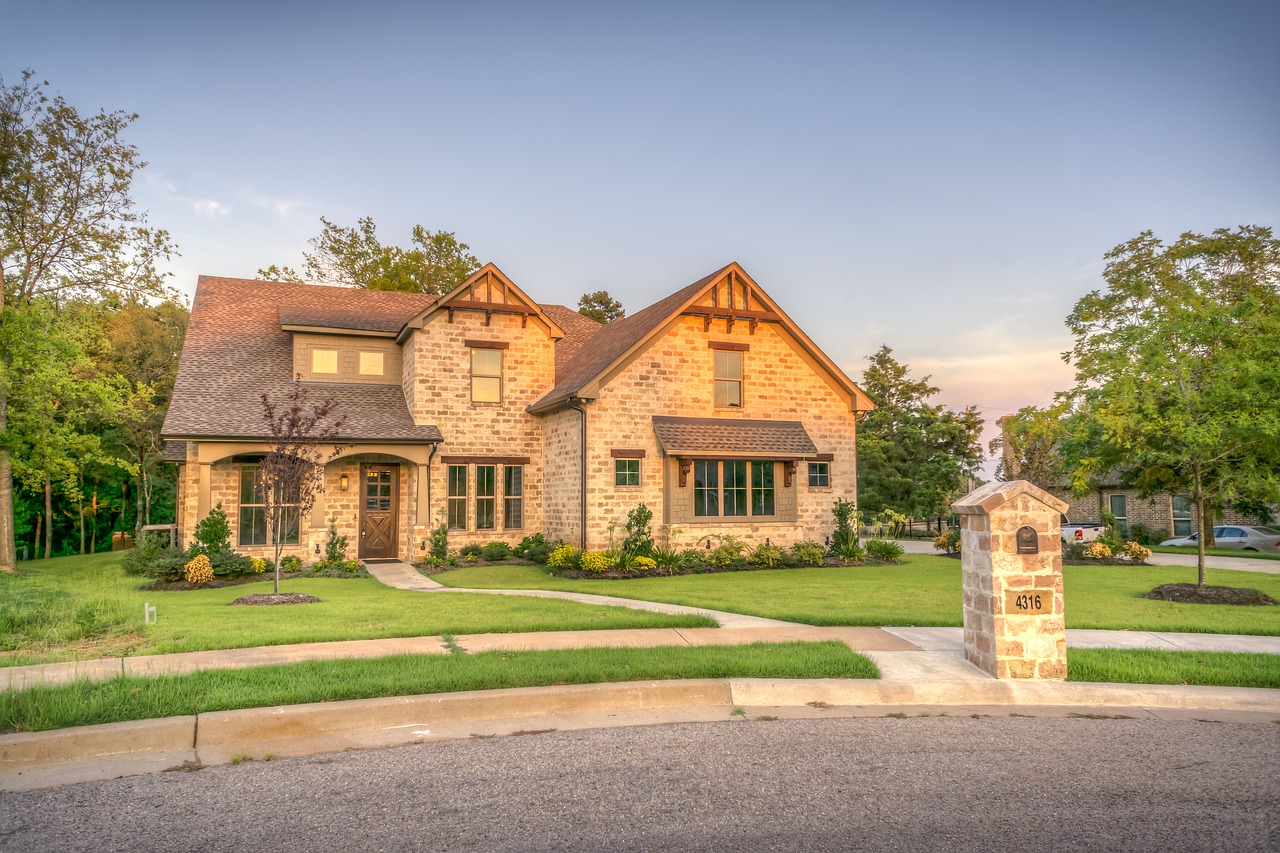
Evaluating Structural Integrity
This article provides essential tips and strategies to help homeowners safeguard their properties against natural disasters, ensuring safety and preparedness for unexpected events.
Natural disasters vary widely, including hurricanes, earthquakes, floods, and wildfires. Understanding these types helps homeowners tailor their preparation strategies effectively.
An effective emergency plan is crucial for family safety during a disaster. This section outlines steps to create a comprehensive plan that includes communication and evacuation procedures.
Clear communication is vital during emergencies. This subheading discusses how to set up reliable communication methods among family members and with emergency services.
Selecting trustworthy emergency contacts can streamline communication during a disaster. This section highlights the importance of having local and out-of-area contacts.
Identifying safe meeting points ensures family members can reunite after a disaster. This section emphasizes the importance of choosing accessible and recognizable locations.
An emergency kit is essential for survival during disasters. This section details the necessary items to include in your kit for various disaster scenarios.
Securing your home can significantly reduce damage during a disaster. This section provides practical tips on reinforcing structures and protecting valuables.
When it comes to protecting your home from the unpredictable fury of nature, evaluating your home's structural integrity is not just a good idea—it's essential. Think of your house as a fortress; if the walls are weak, the entire structure can crumble under pressure. Start by examining the foundation, as this is the backbone of your home. Look for cracks, shifting, or any signs of water damage that could compromise its stability. You wouldn't want a shaky foundation to be the reason your family is left vulnerable during a disaster.
Next, take a close look at your roof. It’s your first line of defense against heavy rains and strong winds. Inspect for missing shingles, leaks, or sagging areas that might indicate underlying issues. A well-maintained roof can prevent water intrusion and protect your home from severe weather conditions.
Windows and doors are another critical area to assess. Ensure they are properly sealed and consider upgrading to impact-resistant glass or storm shutters, especially if you live in hurricane-prone regions. These features can significantly enhance your home’s resilience against flying debris and high winds.
Additionally, don't overlook the importance of your home's overall design. Homes with a low profile and aerodynamic shape tend to fare better in high winds. If you're considering renovations or upgrades, think about how those changes can improve your home's ability to withstand various natural disasters.
To help visualize this process, here’s a simple checklist to guide your evaluation:
- Inspect the foundation for cracks and water damage.
- Check the roof for missing shingles or leaks.
- Examine windows and doors for proper sealing.
- Consider the overall design of your home for wind resistance.
Finally, if you feel overwhelmed or unsure, don’t hesitate to call in a professional. Structural engineers or home inspectors can provide a thorough analysis and recommend necessary improvements. Investing in your home’s structural integrity is not just about safety; it’s about peace of mind knowing that you’ve taken proactive steps to protect your loved ones and your property against the unpredictable forces of nature.
Q: How often should I evaluate my home's structural integrity?
A: It's advisable to conduct a thorough evaluation at least once a year, and after any significant weather events.
Q: What are some signs that my home may need structural repairs?
A: Look for cracks in walls or foundation, doors and windows that stick, or sagging roofs.
Q: Should I hire a professional for the evaluation?
A: If you're unsure about the structural condition of your home, hiring a professional can provide you with a detailed assessment and peace of mind.

Installing Protective Features
When it comes to safeguarding your home against the unpredictable forces of nature, installing protective features is not just a good idea—it's essential. Think of your home as a fortress; you wouldn't leave the gates wide open, would you? By reinforcing your living space with the right installations, you can significantly reduce the risk of damage during a disaster. Let's dive into some of the most effective protective features you can consider.
First and foremost, storm shutters are a game-changer for homes in hurricane-prone areas. These sturdy barriers not only shield your windows from flying debris but also help maintain your home's temperature and prevent water intrusion. Installing storm shutters can be as simple as adding accordion-style panels or as elaborate as motorized systems that deploy at the push of a button. Regardless of the type, having these in place can give you peace of mind when storms approach.
Next on the list are reinforced doors. A solid door can be your first line of defense against high winds and intruders. Opt for doors made from fiberglass or solid wood, and ensure they are fitted with high-quality deadbolts. Additionally, consider installing door jamb reinforcements and using hurricane straps to secure the door frame to the wall. These extra measures can make a significant difference in your door's ability to withstand severe weather.
Another effective installation is a roof anchor system. This feature is particularly beneficial for areas prone to heavy snowfall or high winds. Roof anchors help secure your roofing materials, preventing shingles from being blown away or damaged. Moreover, if you live in a region where wildfires are a concern, consider using fire-resistant materials for your roofing and siding. This can drastically reduce the chance of your home catching fire during a wildfire event.
Don't forget about your landscaping. While it might seem unrelated, the way you manage your yard can have a direct impact on your home's resilience. Trim overhanging branches, remove dead trees, and opt for native plants that are more resistant to local weather conditions. Creating a defensible space around your property can help divert fire and wind away from your home.
Finally, consider installing a backup generator. In the event of a power outage caused by a disaster, having a generator can keep essential appliances running, ensuring you have access to food, water, and communication. This can be a lifesaver, especially in prolonged emergencies where power restoration may take time.
In summary, installing protective features in your home is a proactive measure that can save you from significant financial and emotional distress. By reinforcing your windows, doors, and roof, managing your landscaping, and being prepared for power outages, you can create a safer environment for you and your family. Remember, the goal is to make your home as resilient as possible against the unpredictable whims of Mother Nature.
Q: What are the most important protective features to install?
A: The most crucial features include storm shutters, reinforced doors, roof anchor systems, and fire-resistant materials.
Q: How can I assess if my home needs protective features?
A: Consider your location and the types of natural disasters common in your area. Consulting with a professional can also help identify vulnerabilities.
Q: Are there any DIY options for installing protective features?
A: Yes, many homeowners can install storm shutters or reinforce doors with basic tools. However, for complex installations, hiring a professional is recommended.
Q: How often should I check my protective features?
A: It's a good practice to inspect your protective features at least twice a year, especially before the start of the storm season.
Frequently Asked Questions
- What types of natural disasters should I prepare for?
It's essential to consider various natural disasters, such as hurricanes, earthquakes, floods, and wildfires. Each type has unique risks and preparation strategies. Assess your location and identify the most likely threats to tailor your emergency plan accordingly.
- How can I create an effective emergency plan for my family?
Start by discussing potential disasters with your family. Outline clear communication and evacuation procedures. Make sure everyone knows how to reach each other and where to meet if separated. Practice your plan regularly to ensure everyone feels comfortable and knows what to do when the time comes.
- What should I include in my emergency kit?
Your emergency kit should contain essential items such as water, non-perishable food, a flashlight, batteries, a first aid kit, and important documents. Don’t forget personal items like medications and pet supplies if you have animals. Regularly check and update your kit to ensure everything is fresh and functional.
- How can I secure my home against natural disasters?
Begin by evaluating your home's structural integrity. Look for weaknesses such as loose shingles or cracks in the foundation. Then, consider installing protective features like storm shutters, reinforced doors, and secure windows to help minimize damage during a disaster.
- What are some tips for choosing emergency contacts?
Select trustworthy contacts who can help you and your family communicate during a disaster. It's wise to have both local and out-of-area contacts, as local lines may be down. Make sure everyone in your family knows who these contacts are and how to reach them.
- Why is it important to designate meeting points?
Designating safe meeting points is crucial for ensuring that family members can reunite after a disaster. Choose locations that are easily accessible and recognizable, such as a nearby park or community center. This way, everyone knows where to go if they get separated.

